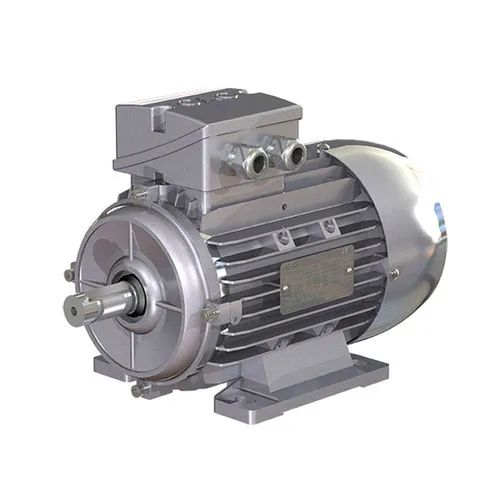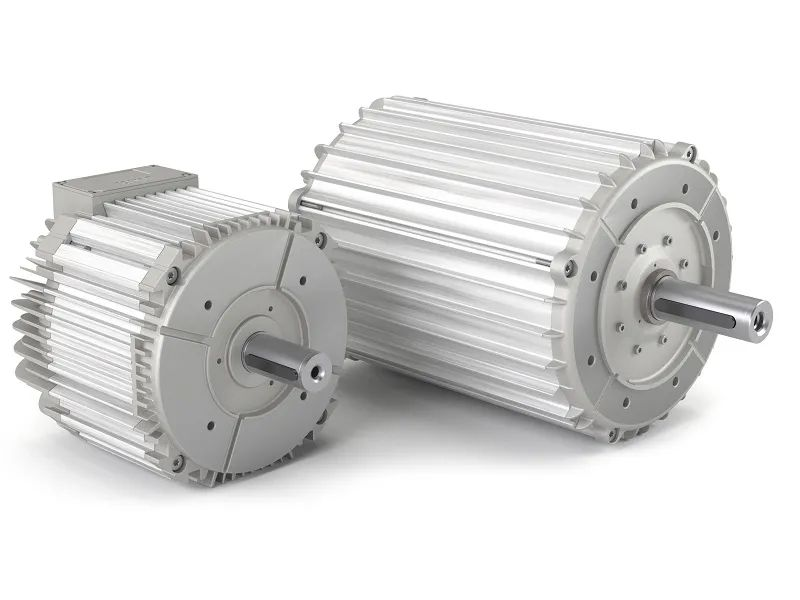What is the difference between asynchronous motors and synchronous motors in automobiles
[Difference Analysis] What is the difference between asynchronous motors and synchronous motors in automobiles, and what are the advantages and disadvantages of each?
Motors used in automobiles are divided into two categories, namely asynchronous AC motors and permanent magnet synchronous motors. In the past, a few brands of vehicles used asynchronous motors, but now they are mainly synchronous motors. So what are the advantages and disadvantages of these two motors, and what are the differences?
As the name suggests, a synchronous motor always has something that runs "synchronously", or "rotates" synchronously; whether it is a synchronous or an asynchronous motor, it has a stator and a rotor; the stator is a fixed part of the motor, and the rotor naturally It is the part that can rotate. The stator is divided into two types: windings and iron cores, which have the same function. When the three-phase alternating current is connected to the stator, the stator will generate a rotating magnetic field.
The rotation speed of the stator magnetic field is variable, and the frequency of the power supply determines the "speed" of the magnetic field; the rotor of the synchronous motor can be understood as a permanent magnet (including electromagnet), and the rotor naturally has magnetic poles, that is, N/S, then The rotating magnetic field of the stator naturally attracts the magnetic field of the rotor to cause it to rotate. The permanent magnet synchronous motor means that the magnetic field speed of the stator and the rotor speed are the same. They are the same, so they are called synchronous motors.
Then the opposite is an asynchronous motor, but the asynchronous motor is not that simple; the rotor of the asynchronous motor is a short-circuit winding and has no magnetic poles; the rotating magnetic field generated after the stator is energized will cut the rotor winding, induce current on the winding, and cause current in the rotor. Then it can receive the action of electromagnetic force to accelerate the rotation. However, in the process of accelerating the rotation speed of the rotor, once the rotation speed of the rotor is equal to the rotation speed of the stator magnetic field, the two become relatively stationary; at this time, the rotating magnetic field and the rotor winding have no cutting effect, and the rotor will lose its electromagnetic force (which can be understood as losing Slowing down due to power or attraction) can even be understood as "instant stall".
And just after the rotor decelerates, the rotor and stator magnetic field speeds are different again, and the two will move relative to each other again - deceleration and then acceleration, synchronization and then deceleration, deceleration and acceleration again. This is the asynchronous motor, rotor and magnetic field speed. no the same.
After figuring out the difference between the two, what you need to know is the advantages and disadvantages
The shortcomings of the asynchronous motor are very prominent. Its starting performance is worse than that of the permanent magnet synchronous motor, because when starting, the magnetic field must be rotated to generate a current on the rotor (short-circuited winding) before it can start running. The synchronous motor only needs the stator to be energized. Can interact with the rotor. Another shortcoming is that the speed regulation performance is relatively poor. The core reason is "asynchronous". As a driving motor, it does not seem to be so ideal. The key point is "seems".
Secondly, the power factor of the asynchronous motor is not high. When running, it needs useless power after being absorbed by the circuit system; the concept of power factor is the ratio of active power to apparent power in the AC circuit. The higher the value, the better. Waste power is not the concept of "useless power". The drive motor operates on the principle of electromagnetic induction. An alternating magnetic field must be established to transform and transfer energy. What is needed to establish an alternating magnetic field and induced magnetic flux is waste power. This kind of Although power cannot be directly converted into mechanical energy (power), it cannot operate without useless power. Therefore, the shortcomings of asynchronous motors are more prominent, so what are the shortcomings of synchronous motors?
Synchronous motors have a more prominent shortcoming, or a shortcoming that is absolutely outstanding and cannot be solved.
The manufacturing cost is far higher than that of asynchronous motors. Apart from that, they are basically advantages. Its advantages are firstly high power factor, secondly high operating power, and thirdly constant speed. When running at a constant speed, the use scenarios of the motor will change. Increased performance due to stable functions, but the reality is that asynchronous motors have become a mainstream option in industrial and agricultural production due to manufacturing cost issues. A synchronous motor is a motor that can generate reactive power and absorb reactive power, and can operate in a steady state to achieve N=ns=60f/p (grid frequency/number of motor pole pairs). As long as the grid frequency is stable, it can operate stably, and the frequency The instantaneous change of the motor rotor can cause the motor rotor to change instantaneously, which is more "smart" than the asynchronous motor. It can be said that the permanent magnet synchronous motor is more suitable for use as a passenger car engine and is also excellent as a generator.
The power generation method of the permanent magnet synchronous motor is very simple. After the stator is energized, the prime mover drives the rotor to rotate. The three-phase winding of the stator cuts the rotor magnetic field to generate electromotive force to generate electricity. The stator of the asynchronous motor has three-phase windings, but the rotor is short-circuited. The winding has no magnetic field; so if an asynchronous motor wants to generate electricity, it must first establish a magnetic field. To put it bluntly, it must first energize the stator like when driving, and then the rotor can produce current. But how exactly does it generate electricity?
The prerequisite for power generation of an asynchronous motor is to energize the stator first, and then the prime mover pulls the rotor speed to a speed exceeding the speed of the stator magnetic field before it can start generating electricity. That is, when it reaches the instant "constant speed" and starts to decelerate during driving, it can continue to accelerate. Power generation; the so-called prime mover here is the wheel, and the power comes from the inertial force of the vehicle when taxiing. This power generation method is kinetic energy recovery. In theory, the recovery effect of the synchronous motor should be higher.
Do asynchronous motors have no advantages?
The answer is of course no. It has an absolute advantage, and an advantage that can only be reflected when used in electric vehicles.
The manufacturing cost is low and the operating efficiency is high at high speed and low torque. The permanent magnet synchronous motor will be less efficient in the ultra-high speed range. To put it bluntly, it will consume some electricity. This is why electric vehicles consume more power when driving at high speeds. One, but if the efficiency of the synchronous motor is improved through technical means and the power is increased to achieve a low corresponding speed at high speeds, power consumption can also be reduced. However, using asynchronous motors with the same technical standards can always reduce power consumption in high-speed ranges, so the best solution should be to use the two together. For example, a full-time four-wheel drive vehicle composed of front and rear dual motors can use a "synchronous + asynchronous" combination. It seems that there are currently two passenger car brands that have used this combination, e3.0 and Moula.
To sum up, the advantages and disadvantages of synchronous motors and asynchronous motors are just like this. In theory, it is possible to use a multi-machine combination of pure synchronous motors to achieve ultra-high performance, and the driving quality of the vehicle will be high enough; using asynchronous motors alone will still be worse. Yes, the combination of the two may bring some interesting changes. It depends on what surprises the e3.0 platform can bring.
There may still be room for cheap asynchronous motors to exert energy in electric vehicles.





























 XINDA
XINDA